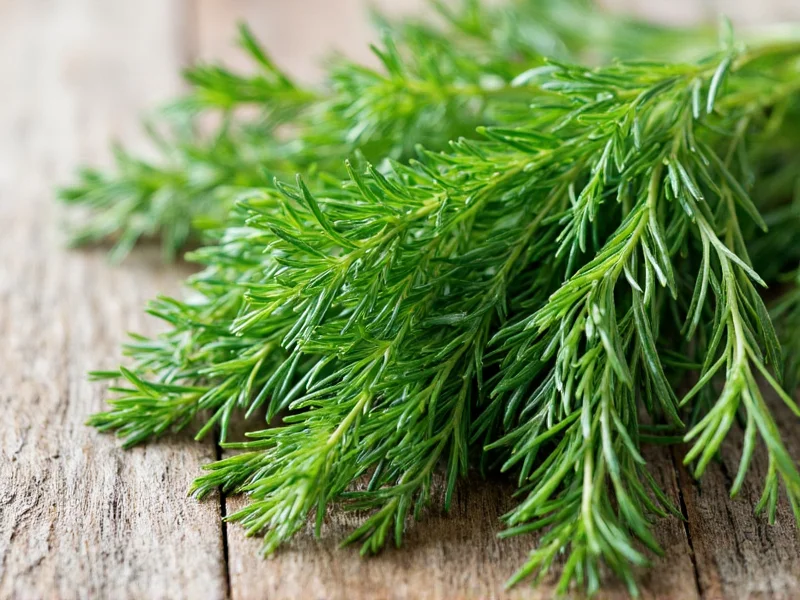Dill (Anethum graveolens) stands among the most recognizable herbs in global cuisine, prized for its unique flavor profile that transforms ordinary dishes into memorable culinary experiences. Understanding dill's flavor characteristics helps home cooks and professional chefs maximize its potential in various cooking applications.
Understanding Dill's Flavor Profile
Dill's flavor profile contains three primary components that create its signature taste:
- Grassy freshness - Similar to young fennel or mild celery
- Anise undertones - Subtle licorice-like notes, though less pronounced than fennel
- Citrus brightness - Lemon and lime nuances that provide refreshing contrast
The balance of these elements varies significantly between fresh and dried forms. Fresh dill maintains higher concentrations of volatile oils responsible for its bright, delicate flavor, while drying concentrates certain compounds while diminishing others.
Fresh vs. Dried Dill: Flavor Comparison
| Characteristic | Fresh Dill | Dried Dill |
|---|---|---|
| Primary Flavor Notes | Grassy, citrus-forward, delicate anise | Earthy, concentrated anise, muted citrus |
| Intensity | Mild to moderate | Moderate to strong |
| Best Used In | Finishing dishes, cold preparations, delicate sauces | Hearty stews, baked goods, spice blends |
| Substitution Ratio | 1 part fresh = 3 parts dried | 1 part dried = 1/3 part fresh |
Culinary Applications of Dill Flavor
Dill's versatility spans multiple culinary traditions and cooking techniques. When working with dill flavor, consider these proven applications:
Fish and Seafood Pairings
Dill's bright acidity cuts through the richness of fatty fish like salmon, trout, and mackerel. The herb's sulfur compounds interact favorably with fish proteins, creating harmonious flavor combinations. Try these approaches:
- Compound butter with fresh dill for grilled fish
- Dill-infused brine for gravlax or smoked fish
- Classic Scandinavian fish cakes with dill and potatoes
Cucumber and Dairy Combinations
The enzymatic reaction between dill and cucumbers creates new flavor compounds that enhance both ingredients. This explains why dill features prominently in:
- Traditional tzatziki sauce (Greek yogurt, cucumber, dill)
- Classic dill pickles and refrigerator pickles
- Cold cucumber-dill soup (particularly popular in Scandinavia)
Modern Culinary Innovations
Chefs increasingly explore dill beyond traditional applications. Successful contemporary uses include:
- Dill pollen as a finishing spice for its concentrated floral notes
- Dill seed in bread baking for subtle anise flavor
- Infused dill oils for modern plating techniques
- Dill vinegar for salad dressings with enhanced shelf stability
Common Mistakes When Using Dill
Even experienced cooks sometimes misapply dill. Avoid these frequent errors:
- Overcooking fresh dill - Heat destroys delicate flavor compounds; add fresh dill during final cooking stages
- Using dried dill in cold applications - Dried dill doesn't rehydrate properly in cold dishes
- Mixing dill with strong competing flavors - Avoid combining with rosemary or thyme which overpower dill's subtlety
- Using stems in delicate preparations - Stems contain more bitter compounds; reserve for stocks and infusions
Preserving Dill Flavor
Maximize dill's shelf life and flavor retention with these professional techniques:
- Store fresh dill upright in water (like flowers) with loose plastic covering
- Freeze dill in olive oil cubes for cooking applications
- Create dill-infused vinegar for extended shelf life
- Dry dill flowers for concentrated dill pollen collection
Substituting Dill Flavor
When dill isn't available, consider these alternatives based on your specific application:
- For fish dishes: Fresh fennel fronds (use sparingly) or a combination of parsley and tarragon
- For pickling: Dill seed with a touch of celery seed and lemon zest
- For creamy sauces: Chervil or a small amount of fresh basil with lemon juice
- For baking: Anise seed or caraway in reduced quantities
Remember that no substitute perfectly replicates dill's unique flavor profile. When possible, seek out fresh dill at farmers markets during its peak season (late spring through summer) for the most authentic dill flavor experience.











 浙公网安备
33010002000092号
浙公网安备
33010002000092号 浙B2-20120091-4
浙B2-20120091-4